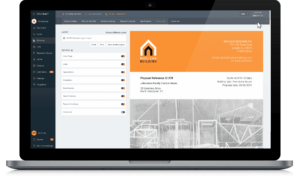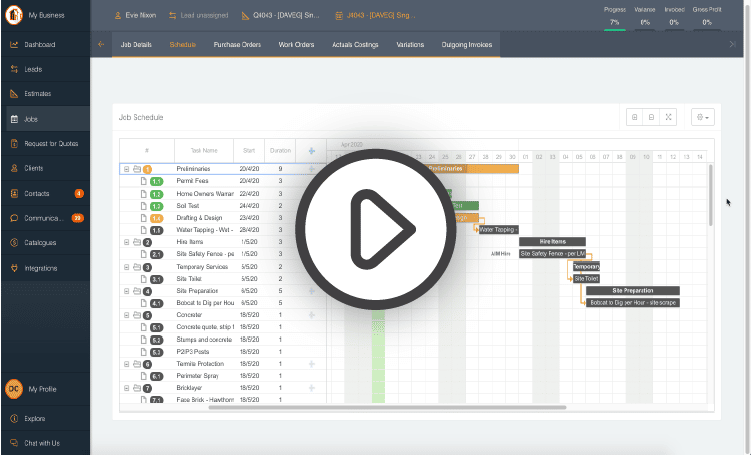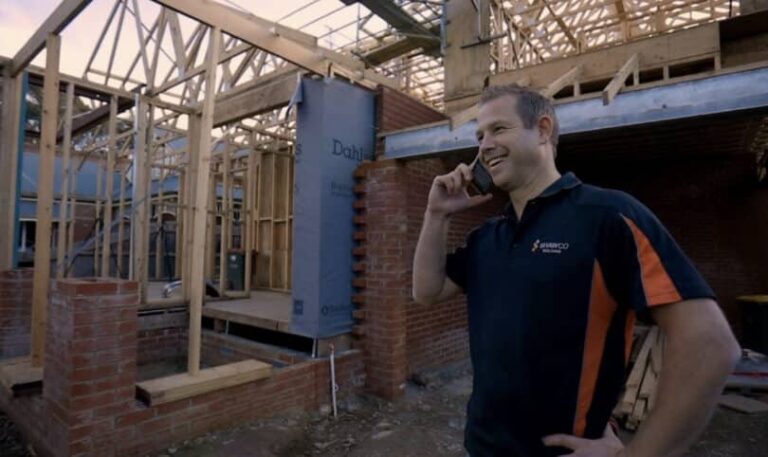As a builder you must take the time for a proper preconstruction meeting. By bringing stakeholders together to review project scope, schedule and budget, you avoid potential issues and delays down the road.
This meeting—typically among you, the homeowner and architect—provides opportunity for the project team to ask questions and address concerns. Taking time to thoughtfully plan and prepare your home construction project saves you from numerous change orders and last-minute material substitutions and orders.
This meeting should take place soon after the homeowner and designer have drafted a scope of work and budget. As a builder, you want to discuss these two important documents to avoid signing on to an unprofitable project or committing to a schedule that you cannot meet.
You should also be careful when agreeing to jobs that have a lot of gaps in design detail. Negotiating projects like these often requires a cost-plus contract that carries a lot of administrative time for you to manage.
With all this in mind, it may seem obvious to hold preconstruction meetings, but many builders neglect them. Let’s review why you should prioritize them.
Know the basics of preconstruction meetings
When planning your next preconstruction meeting, keep in mind three fundamental goals – review the job scope, define the job schedule, and optimize the budget and associated costs.
Scope review
You need to review the project scope with your project manager, tradies and suppliers. This includes an onsite inspection of the construction site and confirmation that drawings have the detail necessary to determine what you can affordably build at the site. Additionally, you also need to ensure your dealer can supply all materials included in the specifications when needed.
Scheduling review
Accurate material deliveries depend on a detailed schedule. The project manager or general contractor needs to ensure the schedule maps out the availability of each subcontractor and trade team so that major components like trusses arrive to the construction site when needed.
This involves reviewing both internal project deadlines and project aspects as well as any external constraints. As a builder, it’s critical that you plan material deliveries with your dealer. Material shortages can cause you to miss the times when your tradies plan to be on your job site. You must remember to properly sequence work. No team should wait idle while material or equipment arrives to the job site
On average, material delays cost builders up to $5,000 per project.
Budget management
Having a preconstruction meeting will help your overall budget management. Expectations and dollar limits set beforehand ensure that all stakeholders remain informed of major milestones and their funding. This ensures proper cash flow to complete the project, and you lose no time to last-minute material substitutions. And remember, make sure the homeowner knows to approve all cost and material decisions for the entire project.
For example, it may be many weeks before interior work begins, but you and the homeowner must be clear on materials, associated costs and budget. You and the homeowner need to clearly itemize choices about doors, windows, flooring, paint.
When you do have to make changes, you raise your customer service when you use a system that easily incorporates costings, change orders and customer communication. Modern construction management software offers these capabilities typically at an affordable monthly cost.
Other benefits of a preconstruction meeting
Once you’ve agreed on the scope, schedule and budget, you have still other topics you can cover in your preconstruction meeting to boost productivity.
Set job site expectations
Throughout the job, you will be working with many different trades. Before a project starts you want to clearly establish quality expectations and explain to how your job site will run. You can discuss what time work crews should arrive and depart, safety procedures, and what clean-up should be done before a team leaves each day. Take the time to explain things clearly. Make sure everyone feels like engaged with the process.
Have transparency and clarity
It is important to be transparent with your team about your expectations and how they communicate to you. This means communicating your vision for daily operations as well as telling your team how they can provide regular feedback. Modern software designed for quick adoption by you offer features—like note tracking, online schedules and client portals—that make constant communication easy.
It is also important to be proactive in your communication and to keep everyone updated on the project’s progress. To be productive, it is important to have meeting minutes and notes that everyone can refer. Client portals make it easy to store notes and project photographs from a central location that everyone can access via laptop at your job site.
Avoid re-working jobs and costly delays
No one wants to constantly revise and re-do their work. This, of course, wastes time and money. As a builder you need to be on the job site supervising work, ensuring the right materials arrive as promised. Many builders like you use cloud-based construction software to cut down on administrative tasks that keep you pinned behind a desk. For example, integrated material supplier pricing, speeds up the time needed to submit orders with your preferred suppliers, and when needed, can the builder can place research orders from anywhere that has an internet connection.
Identify potential issues
Avoiding complexities and expenses during the construction process saves you money in the long run. Many builders find that learning how to use software tools like Buildxact makes them better builders.
Ready to learn more?
For more information about how construction management software can help you run preconstruction meetings, try Buildxact. Book a demo or free 14-day trial today!

















